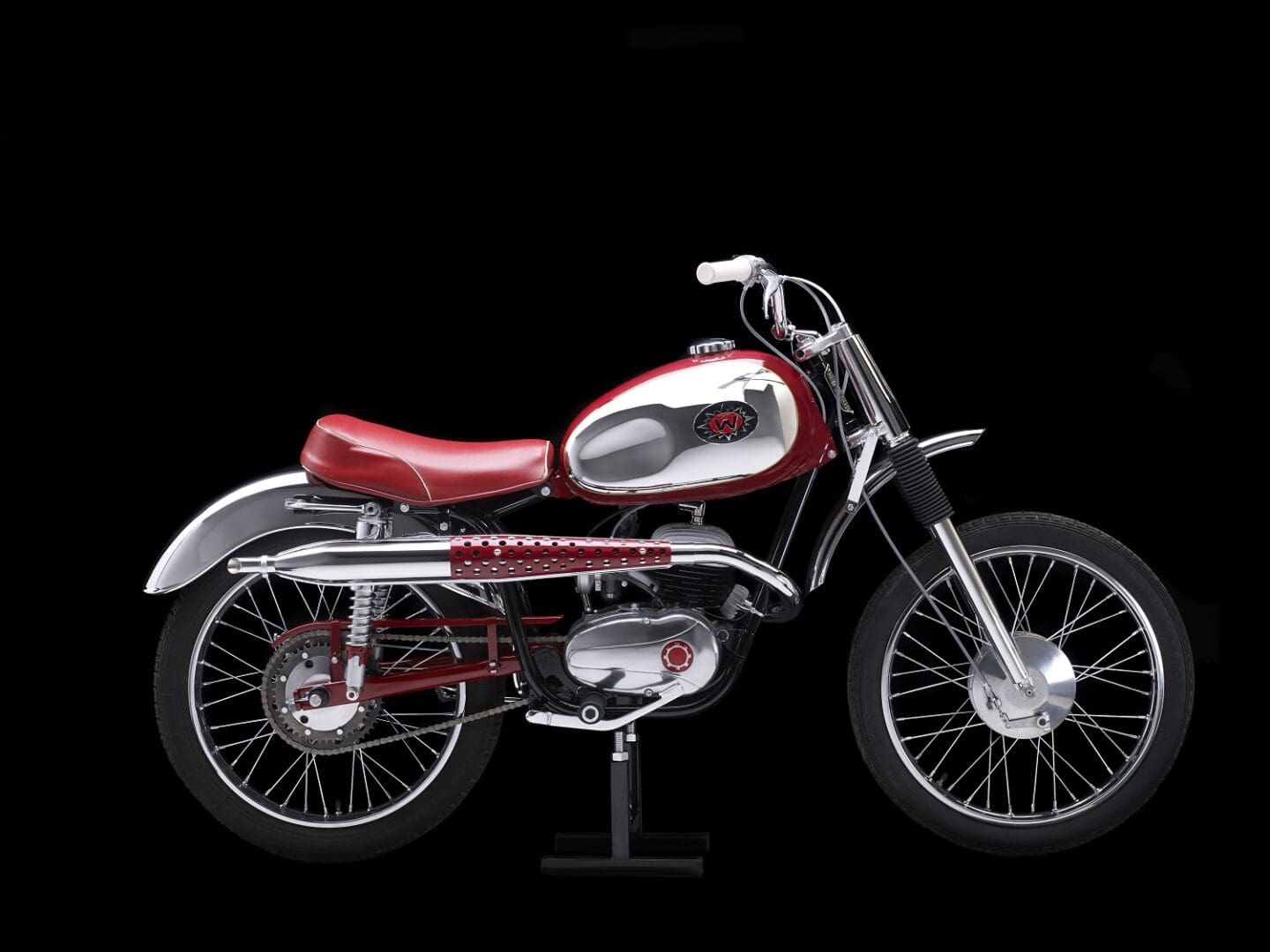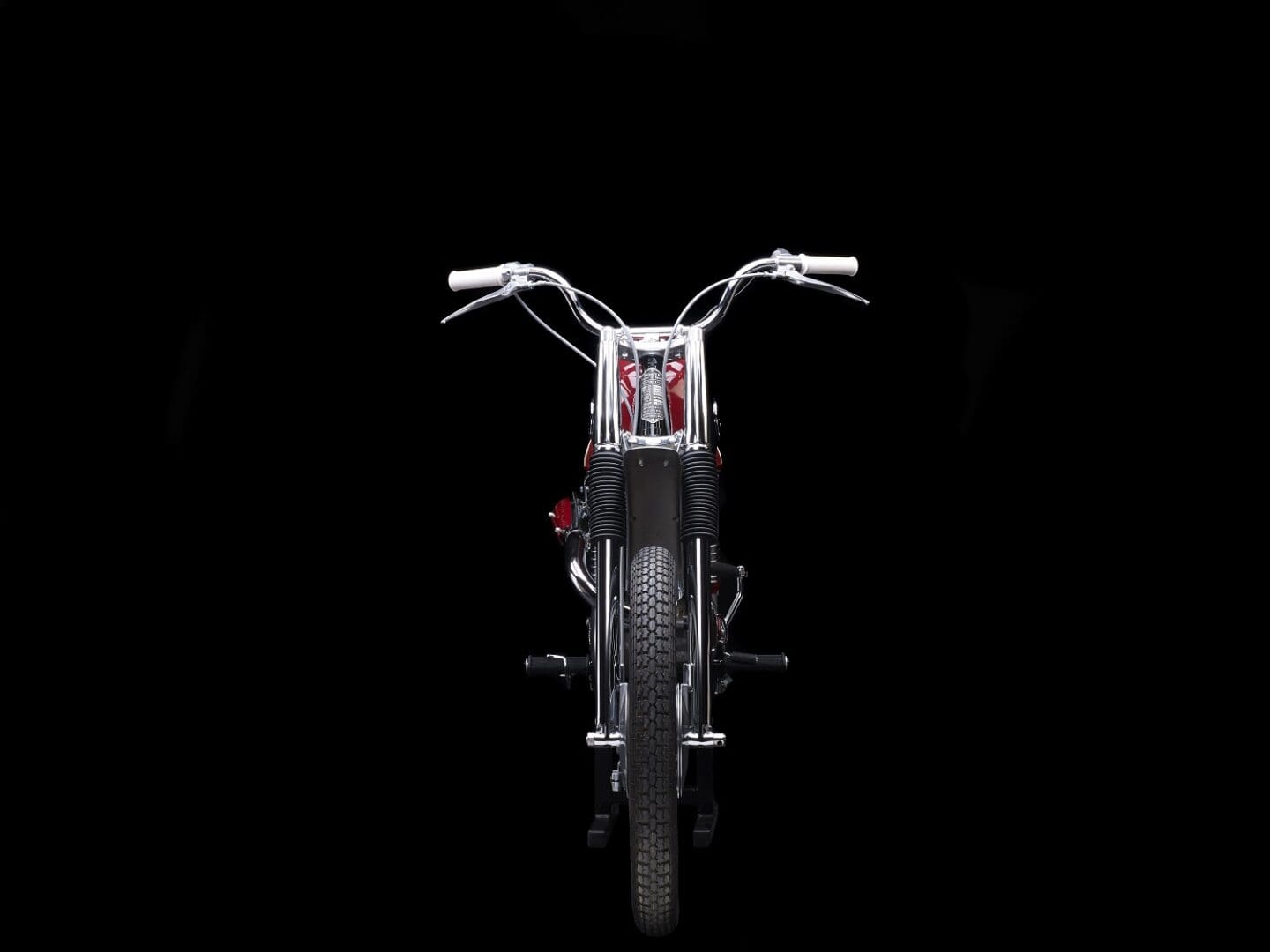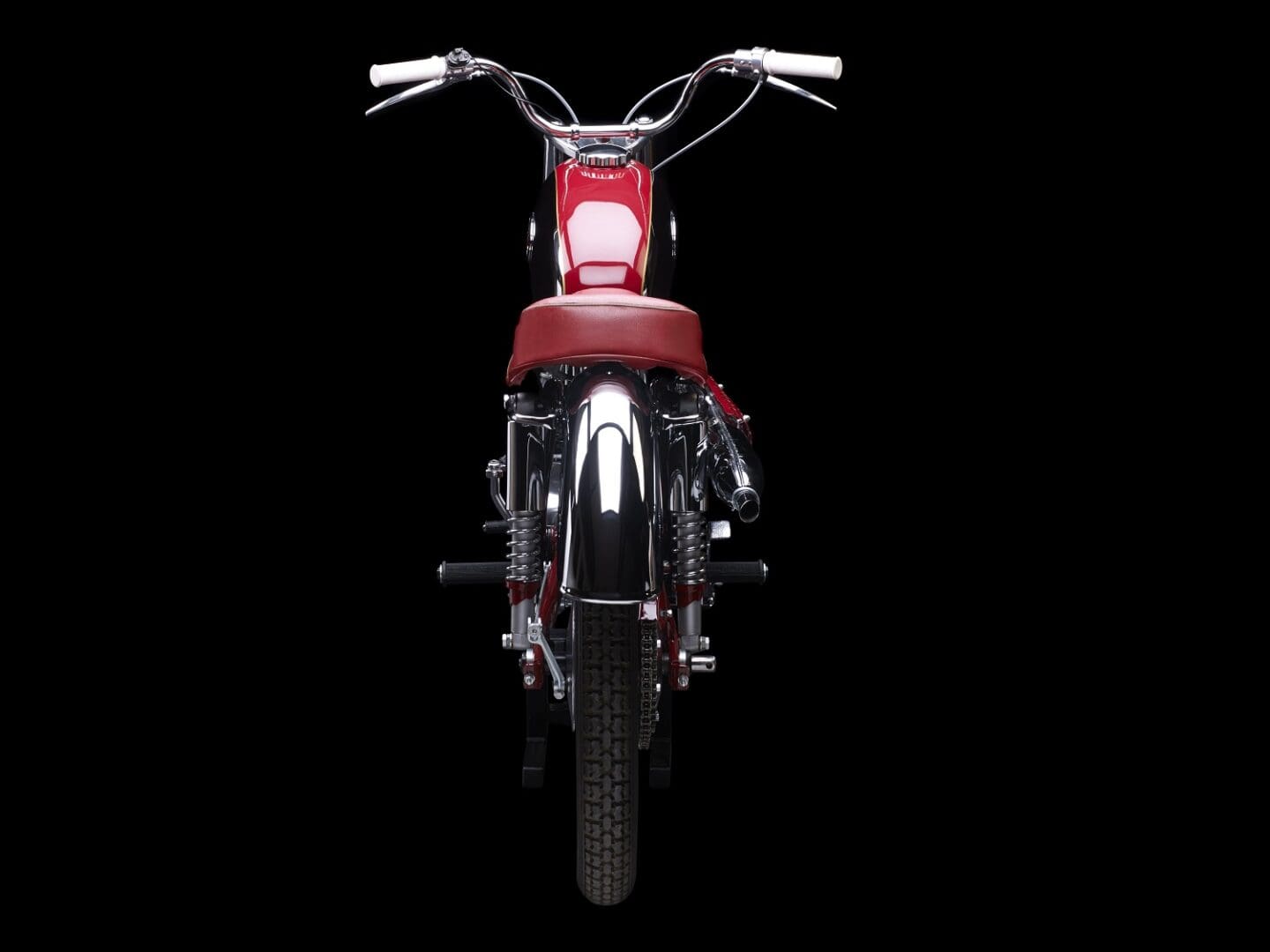White 125 Motocross 1966
Model Information
1966 White 125 Moto-Cross
In the 1960’s, Jack White a frustrated Maico dealer in Santa Ana California envisioned the opportunity to launch his own brand of motorcycles in the US under his own control.
The ambitious story behind the short-lived White International Motors is largely unknown with no documented history. To my knowledge, Jack (and his brother Forrest) White essentially private labeled motorcycles from Danuvia a brand manufactured by the Csepel Steel Works, a Hungarian state owned (i.e., communist) industrial manufacturing facility that produced two-stroke motorcycles. Csepel operated between 1951 – 1975 and also produced the Matra, Meray, Panni, Pannonia, and Tunde brand motorcycles.
Jack White provided Danuvia his desired specification changes for the models he intended to market under the White Motors brand in the United States. The model tag on the frame of the White 125 Moto-Cross in this collection states “Manufactured for White Motors by Danuvia United Tool & Instrument Works, Made in Hungary”.
Upon receipt of the prototypes in 1966, Jack White proudly displayed the White Motors branded models at the 1966 Cycle World (Magazine) show, the premier US motorcycle show of the time to determine dealer receptivity. With significant dealer interest White Motors was becoming a reality, leading to placement of a large order with Danuvia to fulfill initial dealer orders, coordinating magazine tests for the prototypes, placement of magazine advertisements, and even television commercials (according to a Cycle World test of the White 250 Tornado). A magazine advertisement for the White 125 street model claimed “We have about 250 dealers (more soon)”.
Based on the very limited information that I’ve been able to obtain, the proposed product line was to consist of a 125 Moto-Cross, 250 Moto-Cross (later named the Tornado), a Mark-1 125 street bike (single seat model), the Mark II 125 street bike (with a bench seat to accommodate two riders), as well as the 250 Shooting Star street bike.
The 125 Moto-Cross appears to be the Mark 1 with the lights removed and a different and raised front fender. The 125 Moto-Cross even utilized the same street tires as the Mark 1. The 125 street models utilized a down pipe and center stand and interestingly, the Cycle Guide test refers to the 125 Moto-Cross as the Mark III, likely designated as the third model in the White 125 line. An advertisement for the 125 street model listed the price at $389.50 and claimed it had “more speed, power, and all-around capability per dollar than any machine on the market”.
The appearance of the White 125 Moto-Cross is striking with its red steel frame, leather seat, and heat shield on the up pipe; and the abundance of chrome on the shocks, forks, bars, shift and kick start levers, fenders and tank. The front and rear wheels were both 19” and utilized the same hubs so that they were interchangeable as was boasted of in the advertising. Why interchangeable wheels are beneficial, I’m not sure.
The Austrian made 3-speed engine has a mechanical indicator on the top of the cases that can only be seen by looking under the carburetor, I’m not really sure of its intended use either. With a claimed horsepower of 12 @ 6800 rpm it was interesting that their advertising suggested that you “Hang on! The horsepressure’s there!” Yes, they actually said horsepressure, I’m not sure if it’s a typo but I am sure it’s not a word. The rear wheel is equipped with two different sized sprockets and the stinger at the end of the pipe can be extended up to 5 inches as a means to further dial in your preferred performance. But as the Cycle Guide test of the prototype stated “the bike pulled like a 50, not a 125”. Cycle Guides only other complaints were that they were disappointed in the handling, the forks were inadequate, the transmission was obsolete, the frame flexed badly, and the footpegs didn’t fold. Correction, they did state that one of the testers crashed badly when the footpegs folded (the wrong way) at which point the rider ended up on top of the pipe severely burning himself.
Unfortunately, it appears that the White production models never made it to the dealers. Before receiving their initial order from Danuvia, White Motors apparently overlooked the need for DOT motorcycle importation approval, resulting in nonconformance, impoundment, and notice of a $50/bike/day penalty for storage. Without an expedient and economical solution, Jack White’s only option was to abandon all of the production bikes at which point they were likely scraped by US customs. If this was the case, it appears the only White motorcycles to clear customs and enter the US were the not-for-sale prototypes. This may explain why only a handful of bikes remain in existence today.
With 250 dealers committed to carrying the White line of motorcycles (according to its advertising) White International Motors ended as quickly as it started. Regardless, you have to admire Jack White’s entrepreneurial spirit and foresight in marketing a 125 motocross bike, not only long before the 125 class became popular, but before the sport of motocross itself was largely recognized in the US.
1966 White 125 Moto-Cross
I purchased this bike from Kenny Cook in December 2012. If I recall, Kenny raced motocross in 1974 on a Yamaha CT-1 175. At some point he also owned a small motorcycle repair shop. The person from whom Kenny acquired this bike found it in the barn of the original owner somewhere around Hempstead, Texas.
Although I had never heard of a White 125 Moto-Cross, it was clearly one of the first 125’s designated as a motocross bike in the USA. Had it not been for the one and only published motorcycle test on this bike in the October 1967 issue of Cycle Guide, I would never have been able to determine if it was correct. I’ve never seen another one of these bikes anywhere, so although a guess, this could be the bike utilized in the magazine test.
Fortunately, the original owner of this bike didn’t damage or replace anything; it’s exactly as the test bike pictured in the Cycle Guide test. This bike was 100% original and nearly complete; the only missing parts being the clutch cable and spark plug wire. The fact that there was very little tire wear, all the metal parts were straight and undented, and the unique white colored grips had zero wear or damage, suggests this bike got little or no use.
Although correct and essentially complete, time and exposure did a number on the extensive amount of chrome components. In fact, before buying this bike I consulted with Craig my restoration expert to determine if this project was possible. Fortunately he gave me the green light. I imagine the barn that it resided in for nearly 50 years was open to the elements but had a roof to protect it from sunlight, because the distinct red leather seat was still in good condition with the exception of a few minor cracks from dryness. Similarly, the original Cordatic tires (2.75 x 19 front, 3.00 x 19 rear) were also in great shape and still held air! The rubber compounds utilized for the foot pegs, kick start lever, shift lever, and fork boots were completely deteriorated and had to be replaced.
I hated to lose the original white colored grips, but they couldn’t be removed intact from the severely rusted handlebars. Also rusted beyond repair were the rims, spokes, nipples, and chain.
After a modest amount of research I found a source in Budapest Hungary who ran a small business called Eastern 2 Stroke that specialized in original Danuvia motorcycle parts! Because the White brand motorcycles utilized nearly every component from the Danuvia line, some of these parts were still available. For unobtainable parts like grips, cables and rubber components, he had exact replicas produced.
With very few parts required, the primary work consisted of the careful disassembly of rusted and corroded components, plating and painting. An unusual and frustrating challenge arose during disassembly. The mounts for the handlebar clamps, rear shocks, and forks had been drilled at the factory with a very small gauge bit where a pin was inserted to keep the bolts from backing out. The extensive rust and oxidation on these parts made it nearly impossible to see the pin ends.
Once finally disassembled, an extensive amount of metal finishing and prep work was required on the rusted and pitted parts before they could be sent out for plating.
I’m so glad that Kenny found this bike and that Craig convinced me that we could restore it, because the end result was pretty remarkable. Collecting motocross bikes doesn’t usually allow us the striking appearance of a beautifully chromed finished product. However, 1966 was the dawn of American motocross and form still clearly presided over function.



